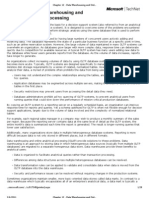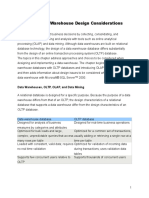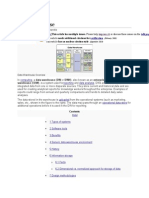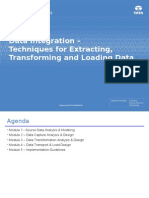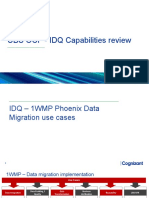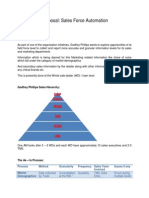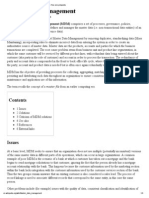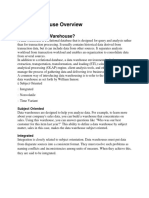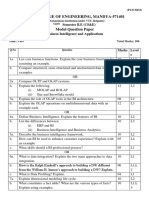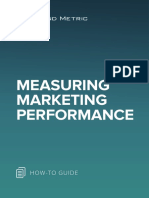0% found this document useful (0 votes)
361 views50 pagesEncrypted Document Analysis
The document discusses data warehouse architecture and its key components. It describes the data architecture, infrastructure, and technical architecture layers. The data architecture is determined by business processes and can use dimensional or entity-relationship modeling. Infrastructure considerations include hardware, storage, and server needs. The technical architecture is driven by metadata and includes extract, transform, load processes as well as security, job control, and other functions. The document also compares hub-and-spoke vs data mart bus architectural approaches and describes staging layers, data warehouses, data marts, and other common components of data warehouse architectures.
Uploaded by
ettauserCopyright
© Attribution Non-Commercial (BY-NC)
We take content rights seriously. If you suspect this is your content, claim it here.
Available Formats
Download as PPT, PDF, TXT or read online on Scribd
0% found this document useful (0 votes)
361 views50 pagesEncrypted Document Analysis
The document discusses data warehouse architecture and its key components. It describes the data architecture, infrastructure, and technical architecture layers. The data architecture is determined by business processes and can use dimensional or entity-relationship modeling. Infrastructure considerations include hardware, storage, and server needs. The technical architecture is driven by metadata and includes extract, transform, load processes as well as security, job control, and other functions. The document also compares hub-and-spoke vs data mart bus architectural approaches and describes staging layers, data warehouses, data marts, and other common components of data warehouse architectures.
Uploaded by
ettauserCopyright
© Attribution Non-Commercial (BY-NC)
We take content rights seriously. If you suspect this is your content, claim it here.
Available Formats
Download as PPT, PDF, TXT or read online on Scribd
/ 50




